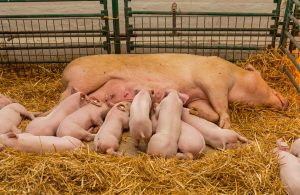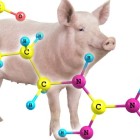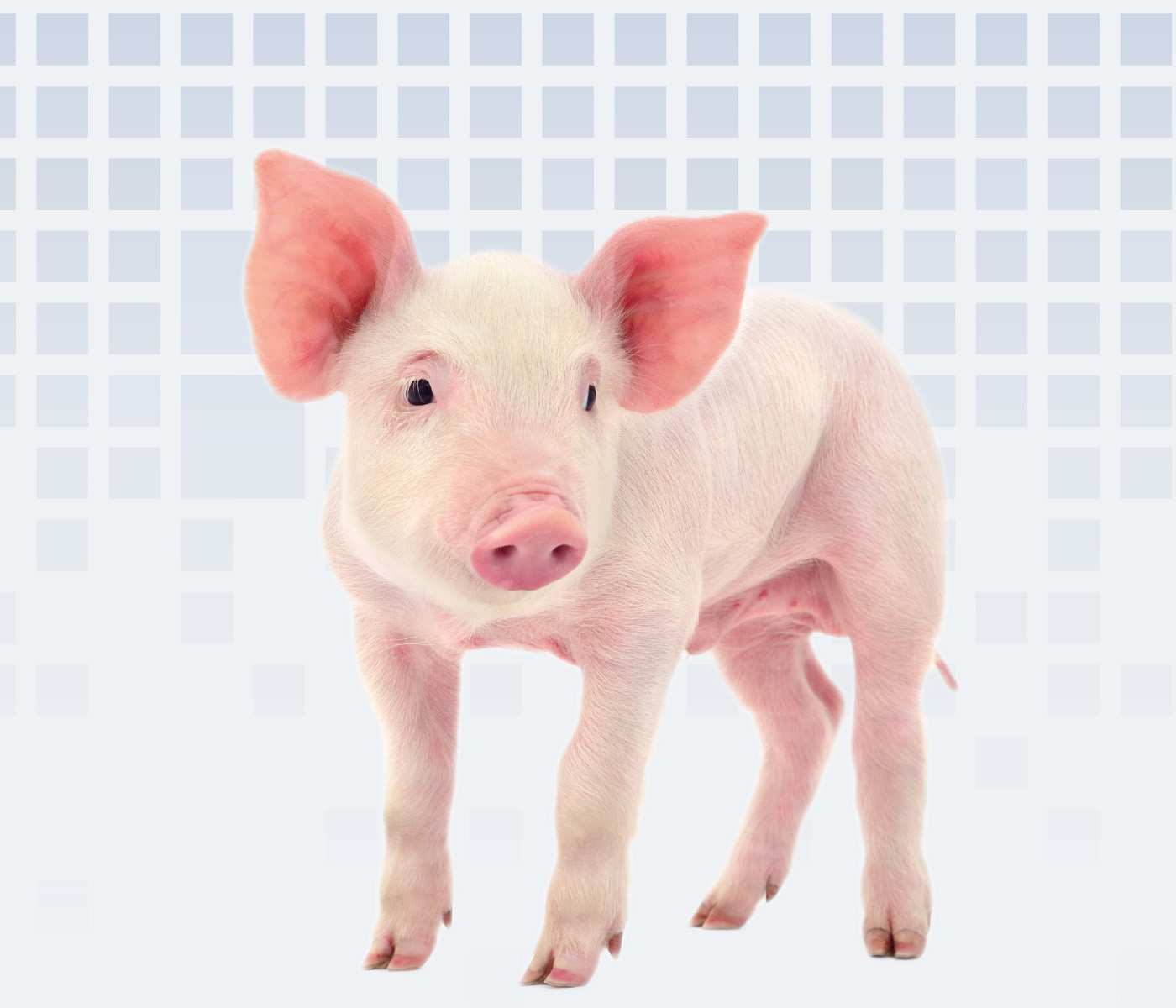Swine Nutritional Requirements
In this second article related to the new edition of the Brazilian Tables for Poultry and Swine (BTPS), we will continue describing the methodologies and equations used to determine energy and nutrient requirements for swine. We recommend acquiring this publication as a reference for nutritionists. In the present summary, the citations of literature were omitted to simplify reading, but the complete documentation can be found in these new report of the BTPS.
Integrated factorial and empirical models were also used to estimate the nutritional requirements of pigs. In this 5th edition, the genetic improvements impacted the growth curves with final heavier live body weights (BW) at similar age. These faster growth rates caused improvements in the feed conversion ratios.
- The Gompertz equation was also used to describe growth. In this article, we will present some equations as examples of the process used to estimate the requirements. However, the BTPS contains more equations and multiple practical examples and values calculated for each growing or reproductive phase or condition.
Most of the equations depend on the BW of growing pigs, gestating gilts or sows, lactating sows, and piglets. Then, an accurate, practical, and expedited estimation of BW and the BW gain becomes even more important. Technologies like machine vision to predict the BW of individual pigs with more frequency may contribute to obtaining a better prediction of nutrient requirements.
The nutritional recommendations were estimated for herds of high genetic potential. This includes values for barrow, gilts, entire males up to 100 kg and immuno-castrated from 100 kg onwards, and mixed-sex pigs of high and standard performance.
Growing pigs
Energy requirements
The daily metabolizable energy (ME) requirements were determined based on daily ME for maintenance (MEm) and for production (MEp) or growth. The MEm (kcal/day) = 106*BW0.75 with BW expressed in kilograms. The MEp was obtained from experiments and the data included performance, feed intake, and ME intake by gender, age, and rearing phases. Consequently, the ME requirements for males of high genetic potential can be estimated with the following equations:
- ME entire males up to 105 kg = (106*W0.75) + (1782.4 + 71.426*BW – 0.4552*BW2)*BWgain (kg/day)
- ME immuno-castrated males 105-155 kg = (106*W0.75) + 5875.5*BWgain (kg/day)
The entire males had lower requirements and feed intake than the immuno-castrated and two equations were adjusted to estimate daily ME requirements.

The requirements can be corrected for environmental temperature (T) with this equation 2.4*BW0.75*(TN – T) using the thermoneutral T (TN). The TN was indicated in the text of the BTPS for each BW range from 15 to 30 kg pigs with 25 oC as TN, to finisher pigs of 100 to 130 kg with 21 oC TN. This is the same correction indicated in the 4th edition of these tables.
The requirements for standard performance were calculated by increasing 3% the values estimated for high genetic potential animals. The reasoning is the potential higher challenges in production, handling, environment, and health that may occur in those production systems.
Amino acid requirements
The requirements of amino acids (AA) for growing pigs were calculated by determining first the need for standardized ileal digestible (SID) for lysine (SID Lys) with the factorial method. The SID Lys for maintenance was established as 0.039 g of SID Lys BW0.75. The SID Lys for growth were estimated with a quadratic equation based on the results of multiple experiments. Then, the following is the final equation to estimate SID Lys requirements for entire growing males with high genetic potential:
- SID Lys (g/day) = (0.039*BW0.75) + (16.074 + 0.1531*BW – 0.0012*BW2)*BWgain (kg/day)
All other AA are estimated using ideal protein profiles for phases during growth as described in the text of these BTPS. Based on the SID Lys requirement crude and digestible protein can be calculated by dividing the value (SID Lys *100) by 6.2 or 7.0%, respectively.
Mineral requirements
The digestible phosphorus (P) requirements for entire and immune-castrated males can be estimated with the following equation: 0.046*BW0.75 + 5.42*BWgain (kg/day). The available P requirement can be estimated as 0.046* BW0.75 + 5.68*BWgain (kg/day).
The total calcium requirement is recommended as 2.04 times the digestible P requirement or 2.10 times the P available requirement.
Requirements for sodium, chlorine, and potassium are estimated with quadratic equations as a function of BW.
Swine Breeders: Gestation and Lactation
The genetic progress of swine breeders to be more prolific was taken into consideration in this 5th report. The effects of parity order, the number of piglets born, and weight loss during lactation, among other factors were accounted for. All nutrient requirements were established in amounts needed per day per animal for optimum performance.
Equations to estimate nutrients and energy considered for the gestation phase are the gilt or sow BW, the BW gain, the number of piglets, reproductive gain, mammary gland development, maternal growth, and recovery from BW loss during the previous lactation.
Requirements for the lactation phase included the litter size, BW, BW loss, litter BW gain, mammary gland involution, and BW loss during the weaning-to-estrus interval.
- The maternal BW gain (kg/day) is obtained with the following equation: (0.01503 – 0.00011*average days) * total maternal BW gain (kg).
The reproductive BW gain (kg/day) labeled in the BTPS as RWG needs to be calculated for two periods 0 to 85 days and 86 to 115 days.
- RWG 0-85 days (kg/day) = (0.000246 * average days in gestation) * Number of piglets.
- RWG 86-115 days (kg/day) = (-0.0307 + 0.000726 * average days in gestation) * Number of piglets
Energy requirements
For gilts and sows in gestation, the RWG information that describes the growth of the uterus, fetuses, fluids, placenta, and mammary tissue, helps to calculate the ME requirement using the following equation:
- ME = 106*BW0.75 + 4915 * maternal weight gain + 1826*RWG
Four categories were used for the gestation sows: nulliparous, primiparous, secundiparous, and multiparous.

Three categories were used for lactating sows: primiparous, secundiparous, and multiparous.
The dietary feed intake was estimated using the ME equation and the dietary energy content to calculate the percentage of dietary nutrients.
The ME requirement (kcal/day) for lactation is calculated using the following equation:
- ME (kcal/day) = 106*BW0.75 + 6230*litter BWgain – 4600*Female BW loss postpartum (kg/day)
A correction for environmental T was included when sows were housed at temperatures outside the TN range (14 to 26 oC) with this equation 2.4 * 60.976*(TN-T).
Amino acid requirements
 The SID Lys (g/day) requirement for gestation sows can be calculated using the following equation:
The SID Lys (g/day) requirement for gestation sows can be calculated using the following equation:
- SID Lys (g/day) = 0.036*BW0.75/0.7 + 22.6* maternal weight gain + 22.6*RWG
In lactation, the SID Lys (g/day) requirement can be calculated as
SID Lys (g/day) = 0.036*BW0.75 + 23.6* litter BWgain – 7.0*Female BW loss postpartum (kg/day)
The total Lys requirement was obtained considering an average SID Lys digestibility of 88%. All other AA were calculated using ideal protein profiles for two periods during gestation from 0 to 85 days and 85 to 115 days, and one profile for lactation sows.
Minimum levels needed of dietary crude and digestible protein can be obtained by dividing the SID Lys (SID Lys *100) by 4.7 or 5.3, respectively, for gilts or sows up to 85 days of gestation. For gestation between 86 and 115 days, the SID Lys values (SID Lys *100) should be divided by 4.5 and 5.0 to obtain crude protein and digestible protein (%) levels to use in the formulation. Finally, for a sow in gestation, the SID Lys should be divided by 5.1 and 5.7.
To formulate low crude protein diets where synthetic AA are included and nonessential AA can become limiting, a 35% ratio of Non-essential to Total Nitrogen (Ne: Total N) ratio was considered for the gestation phase and a 39% ratio for the lactation phase. Examples in the text of the BTPS indicate how to make the calculations and the content of N for each AA used for this estimation.
We expect to motivate interest in exploring this 5th edition of the Brazilian Tables for Poultry and Swine. The application of the equations and practice will reveal the applicability and factors to improve through more research and control.
You may also like to read: “The 5th Edition of the Brazilian Tables for Poultry and Swine”











